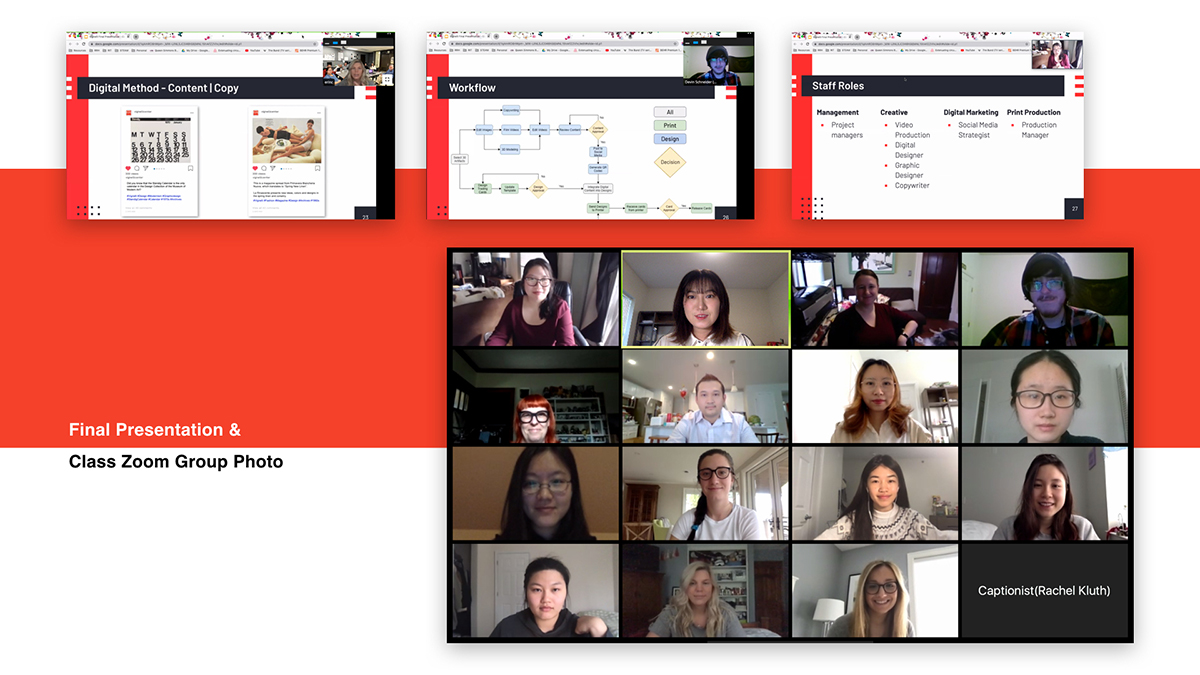Graduate class prepares promotional plan for Vignelli archive
The Cross Media Workflow course led by Senior Lecturer Christine Heusner is a required class for students in RIT’s MS in Media Arts and Technology and MS in Print Media programs.
In the class, students build knowledge in cross-media workflow through theoretical and applied studies. While learning theories using prescribed readings and from class lectures, students deepen their understanding of important concepts by applying them in real-world scenarios. The integration of theories and hands-on practices create an engaging learning experience that helps students obtain a feel for future careers.
This spring, students worked with the Vignelli Center for Design Studies toward the production of an innovative and sustainable cross-media project for promoting the Vignelli archive. Located on the RIT campus, the Vignelli Center holds an international design archive and serves as an educational resource to the RIT community as well as designers, scholars and visitors from all around the world.
For this project, students contributed to the center’s ongoing task of finding ways to increase awareness and expand, diversify and reach new audiences, especially within RIT

The class sought to develop ways to encourage information exchanges between the center and a wider audience by formulating a cross-media promotional plan. Students designed a cross-media workflow optimizing and standardizing the work process to achieve efficiency and accuracy. The core objective of the promotional strategy was to present Vignelli artifacts across various platforms to both online and offline user groups.
Project steps included:
-
Idea preparation and pitching
-
Team division and role assignment
-
Implementation
-
Project workflow and guidelines formulation
-
Delivery
The collaboration with the Vignelli Center started with idea preparation and pitches from class groups during the first three weeks of the semester. Divided into teams, the class discussed different ideas required for creating a cross-media project featuring the Vignelli collection. During the pitching session, each group showcased proposed ideas.
Jennifer Whitlock, Vignelli Center archivist, attended the pitching session and selected the direction the class would take the remainder of the semester. Tied to the use of multiple digital media concepts proposed by each group, the idea of “collectible cards” was selected for the print segment of the final cross-media project. The cards were to be used to attract public interest and produce profits

Due to the COVID-19 outbreak in mid-March, the class moved online, forcing design strategy implementation and content creation to be done remotely.
With the use of digital asset management software and remote collaboration tools such as CreativeDrive SHARE, Zoom, Slack and Google Drive, the class reviewed content from the archive, maintained active communication, held regular meetings and shared working products.
The print team devised rules around the cards and designed the cards and packages. The digital team developed social media strategies, created content in multiple forms (texts, images, videos and 3D models) and documented guidelines. The teams also ensured all outputs followed the brand specifications of the Vignelli Center.

The print and digital components were proposed to be integrated using QR codes, which would be developed to connect the printed products with the social media content. Whitlock provided helpful feedback and resources needed throughout the process.
“The Vignelli cross-media project gave students real-world experience working with a client and each other in a complex team dynamic,” said Lynne Tseng ’11 (Photographic Sciences), ’20 MS (Media Arts and Technology), a student in the class. “Even though the project coordination moved online for the second half of the semester, it gave us an extra lesson of managing projects in a global environment.”
The final output was six collectible card sets of five, which all used different combinations of the 30 cards featuring 30 of the Vignelli artifacts, the creative content in multiple forms and the workflow and guideline documents for the sustainability of the project.
“I have had such a great experience working with the students and being the client for the Cross Media Workflow course," Whitlock said. "Working with artifacts from the archives is not a simple task. Historical artifacts need careful attention to detail while maintaining their context. And designing projects featuring these Vignelli Center artifacts, especially when they are the archives of world-renowned designers, takes careful consideration and refinement. The students were very conscientious and patient about learning the history of the designs and also applying the Vignelli design principles to their projects.
"It was so rewarding to see them bring the artifacts to life in new and exciting ways. Their creativity and hard work in developing projects, both in print and digital, was inspiring.”




